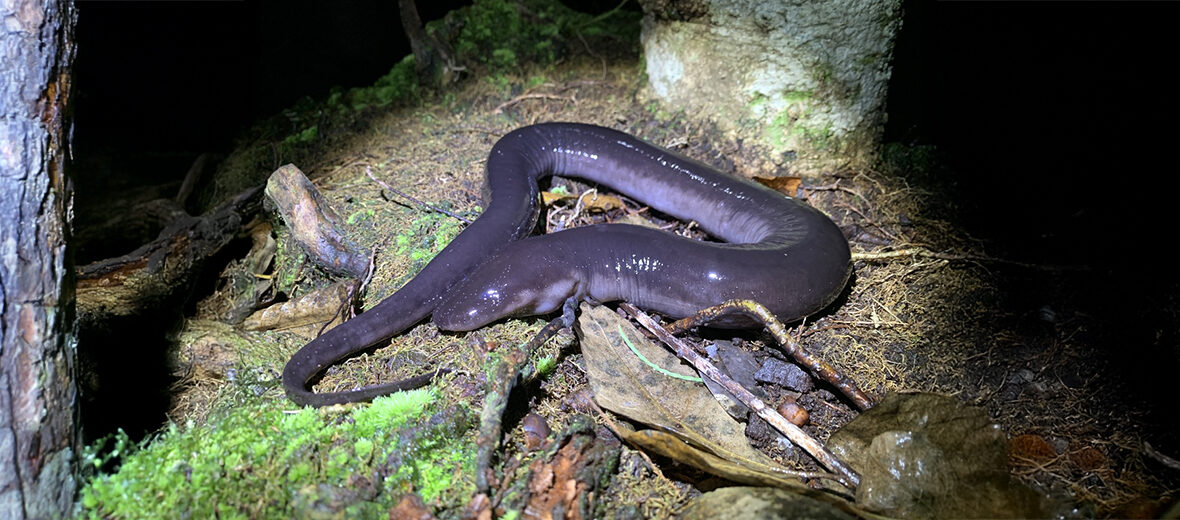
The 2-toed amphiuma, aka congo snake, conger eel, or blind eel, is an aquatic salamander that is widely distributed in the southeastern portion of the United States. The alternate common names are all technically incorrect as they are neither eels nor snakes. These salamanders face the threats of habitat loss and destruction at the hands of farming and ranching; hunting; trapping; and water pollution. However, they are abundant enough to be listed as Least Concern by the IUCN. Their population trend is listed as unknown.
First the Stats…
Scientific name: Amphiuma means
Weight: Up to 2.3 lbs.
Length: Up to 45.67 inches
Lifespan: Up to 12+ years
Now on to the Facts!
1.) They have 4 vestigial legs that end in 2 toes; the number of toes is 1 of the primary differences between these salamanders and their relatives, the 1-toed and 3-toed amphiumas.
2.) These salamanders prefer shallow, heavily vegetated water in bayous, lakes, ponds, swamps, and even wet prairies.
3.) 2-toed amphiumas are nocturnal (active at night).
4.) While typically harmless to humans when left alone, when disturbed, they can deliver a strong bite, which can lead to a severe infection.
5.) Breeding season lasts from June – July.
But wait, there’s more on the 2-toed amphiuma!
6.) Females lay up to 200 eggs each season and remains coiled around them during incubation till they hatch, to protect them from predators.
7.) Incubation can take up to 5 months to complete.
Did you know…?
When disturbed, they are capable of producing audible whistles or clicks. They utilize this audible communication to communicate with one another.
8.) Hatchlings are about 2 inches long with 3 pairs of light-colored external gills that are soon lost after hatching. In some situations offspring can exhibit direct development and hatch without the external gills.
9.) They prey on small fish, tadpoles, crayfish, insects, insect larvae, frogs, salamanders, lizards, water snakes, and even juvenile mud turtles.
10.) They have 2 types of suction feeding: buccal expansion with no forward movement of the head for small prey and buccal expansion with a rapid strike, sharp teeth, and fast twisting to subdue larger prey. Buccal expansion is the widening or distension of the buccal cavity (mouth or oral cavity).
Now a Short 2-Toed Amphiuma Video!
This videos talks about amphiumas in general.
Be sure to share & comment below! Also, check out the Critter Science YouTube channel. Videos added regularly!

Want to suggest a critter for me to write about? Let me know here.
Some source material acquired from: Wikipedia & IUCN
Photo credit: iNaturalist



